As with any surgical procedure, patients are often very concerned with the postsurgical healing process. This includes recovery time around the incision itself. With the gastric sleeve procedure, there are a few different incision options that we will discuss in this post, but first, let’s discuss the gastric sleeve procedure itself.
The gastric sleeve, or sleeve gastrectomy, is a procedure in which a portion of the stomach is removed, leaving a small pouch, or “sleeve” as the remaining portion of the stomach. This stomach-reducing bariatric procedure has proven to be safe and beneficial for long-term weight loss and maintenance.
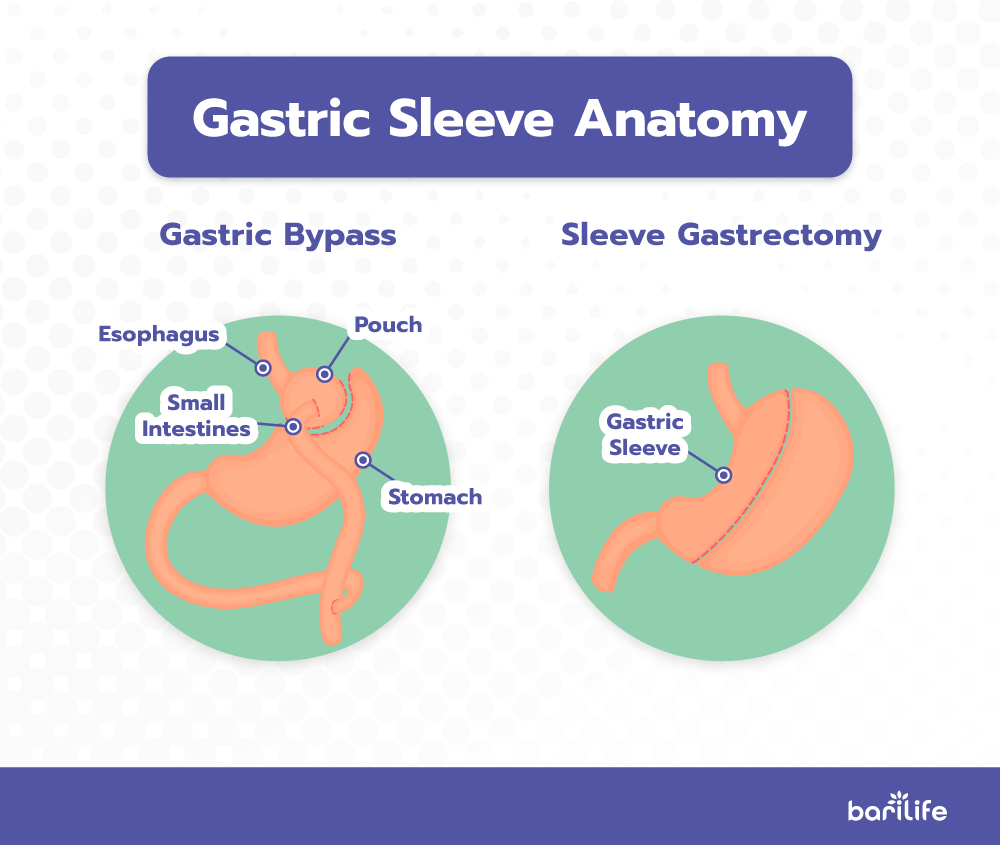
Gastric Sleeve Incision Types
The three types of gastric sleeve incisions are open, laparoscopic, and single incision laparoscopic. These each serve a purpose, although the most commonly utilized is the traditional laparoscopic procedure. Let’s take a closer look at each of the gastric sleeve incision types.
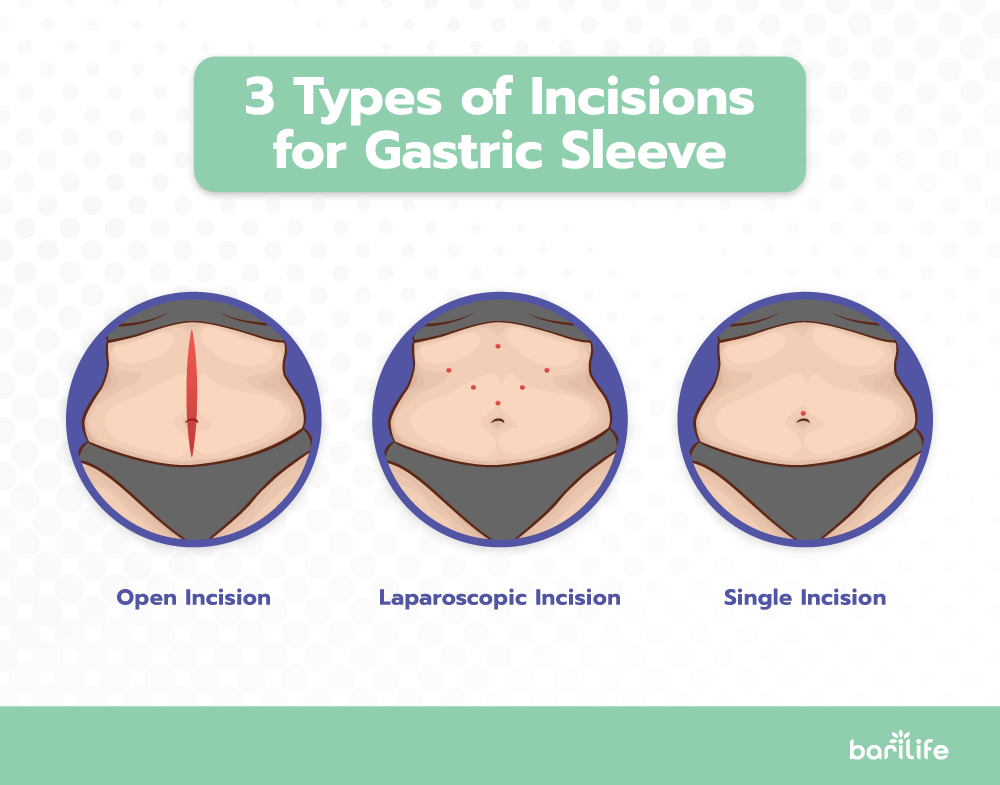
Open Incision
A gastric sleeve procedure using the open incision method is thought of as the traditional approach. An incision is made along the midline of the abdomen so that the stomach and other organs are exposed to the surgeon. This is a very straightforward approach because the surgeon can more easily have access to perform the surgery itself.
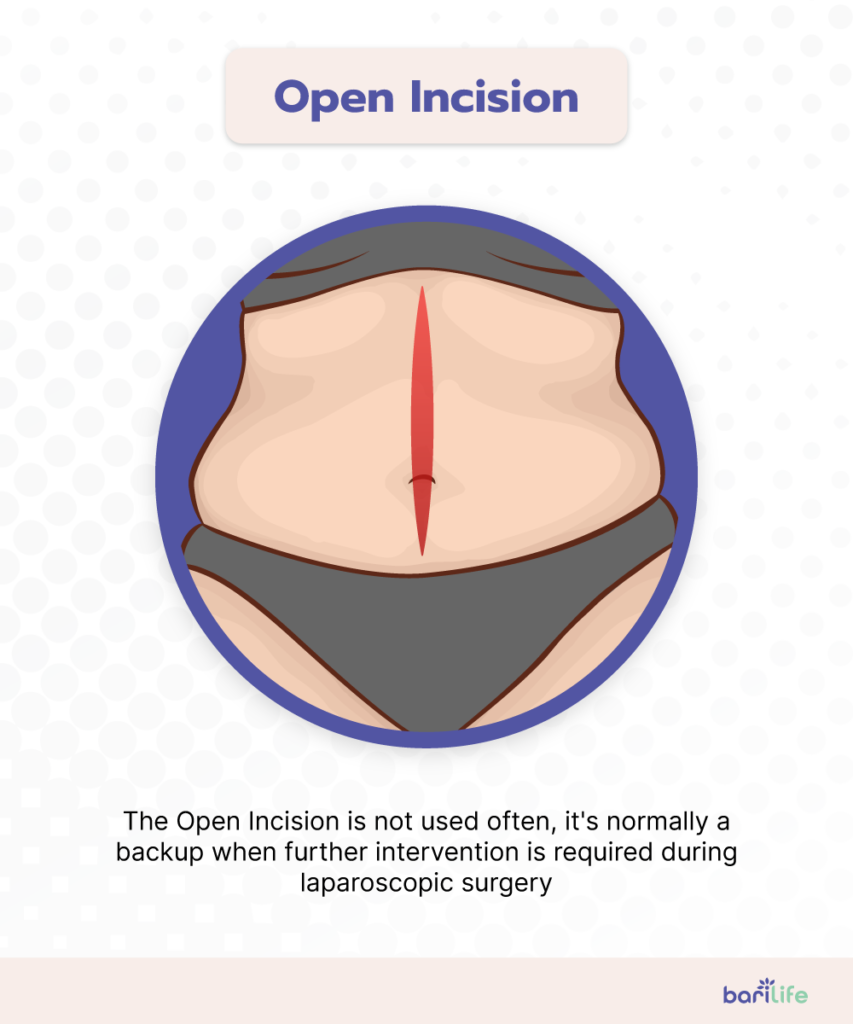
There are some disadvantages to this procedure that include:
- Incisional hernias
- Wound complications
- Increased length of hospital stay
- Increased chance of reoperation
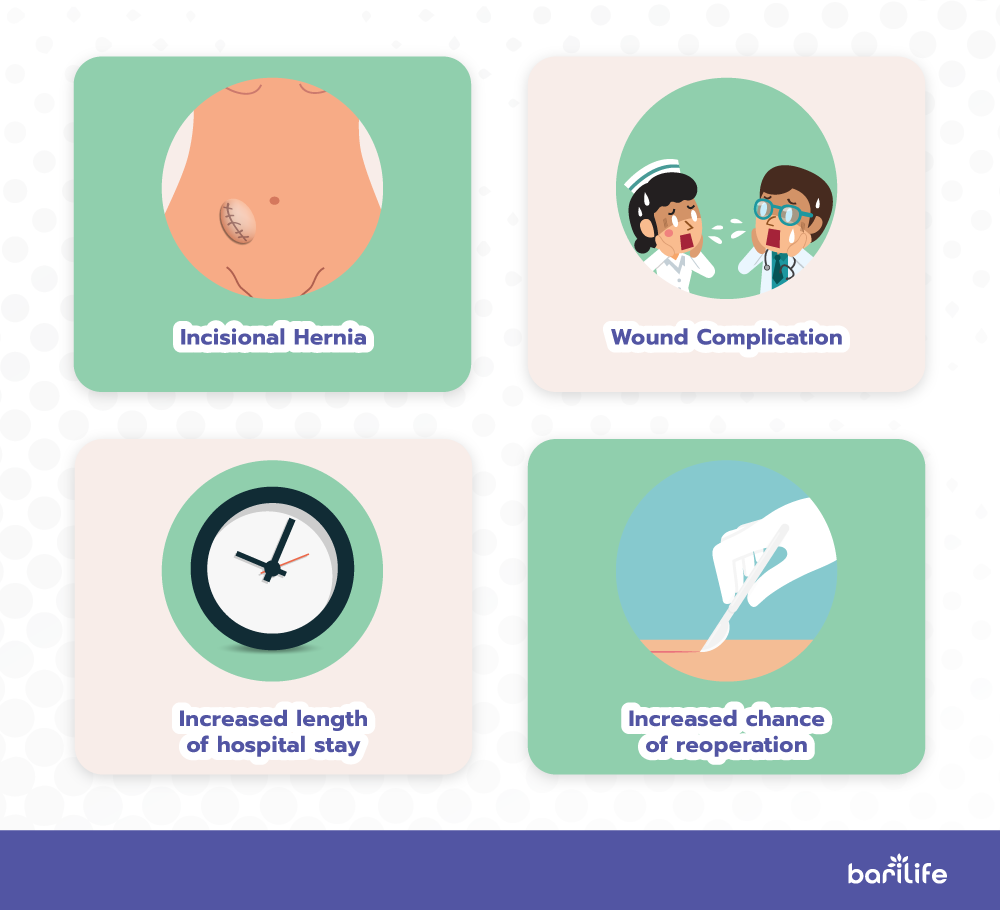
The open gastric sleeve incision approach is often used as a second option when further intervention is required during laparoscopic surgery. These surgeries may be converted to an open incision to allow the surgeon more access to perform surgery.
Laparoscopic Gastric Sleeve Incision
During the laparoscopic gastric sleeve procedure, 5-6 small incisions ranging from 5-15 millimeters in length, are made around the abdominal area. These small incisions will allow the surgeon to place surgical tools and a camera inside of the abdomen in order to carry out the procedure.
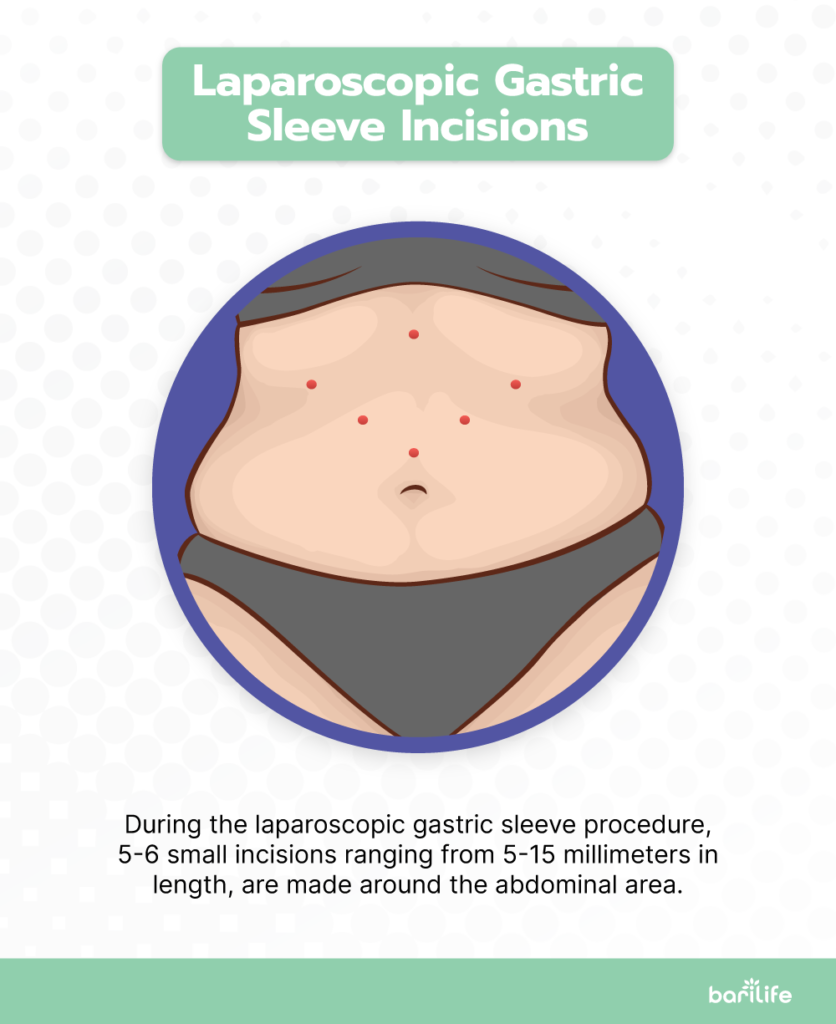
Because the incisions are very small, the surgery is much less invasive. This leads to more advantages to this approach compared to the open gastric sleeve incision including:
- Less likely to require reoperation
- Fewer postsurgical complications
- Fewer days spent in the hospital
- Fewer wound complications
- Lower morbidity and mortality rate
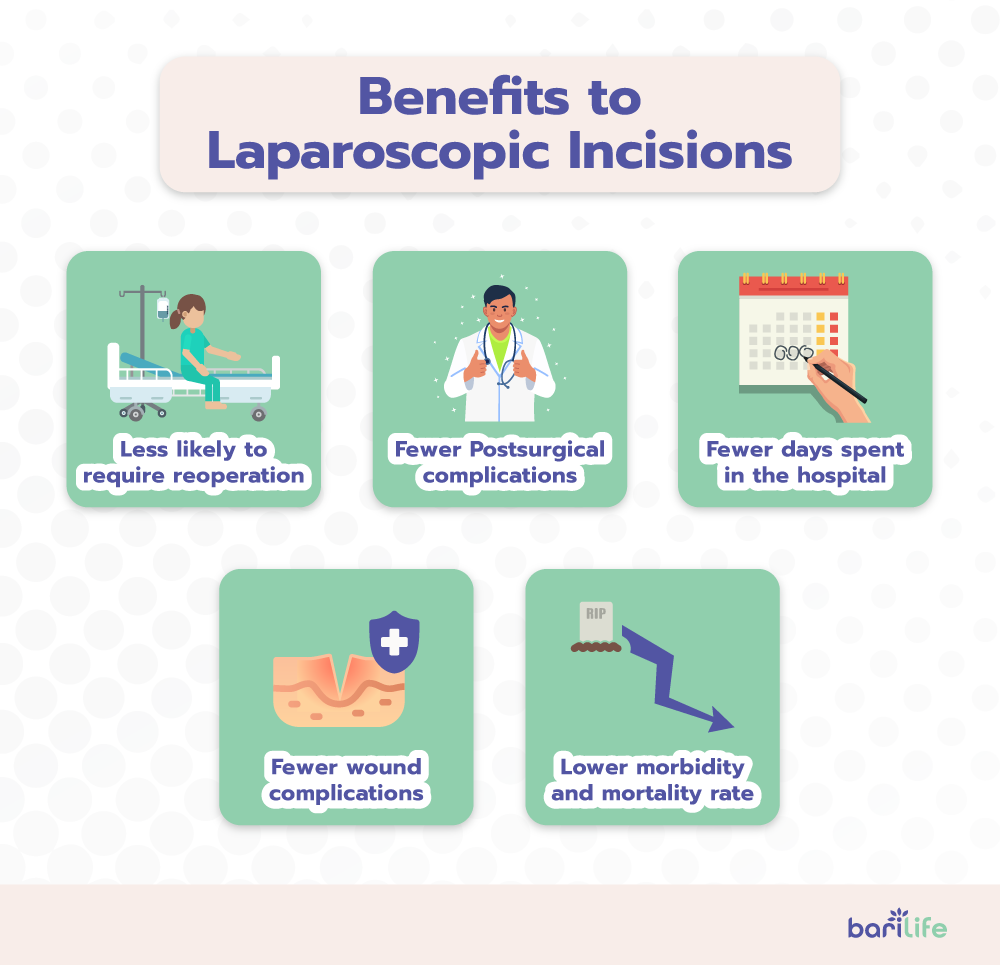
The many advantages of laparoscopic gastric sleeve incisions are the reason why this is the most popular surgical method.
Single Incision Laparoscopic Gastric Sleeve Incision
As the name implies, during the single incision laparoscopic sleeve gastrectomy (SILSG), the surgeon performs the entire procedure using a laparoscopic approach, only now through one very small incision, rather than five.
When compared to the traditional laparoscopic approach, the surgeries appear to have very similar outcomes. There is little to no difference in length of hospital stay and surgical time. Of course, fewer incisions mean fewer scars, and some patients prefer this for aesthetic reasons. However, there is a higher chance of gastric sleeve incision hernia with the SILSG compared to traditional laparoscopic gastric sleeve surgeries.
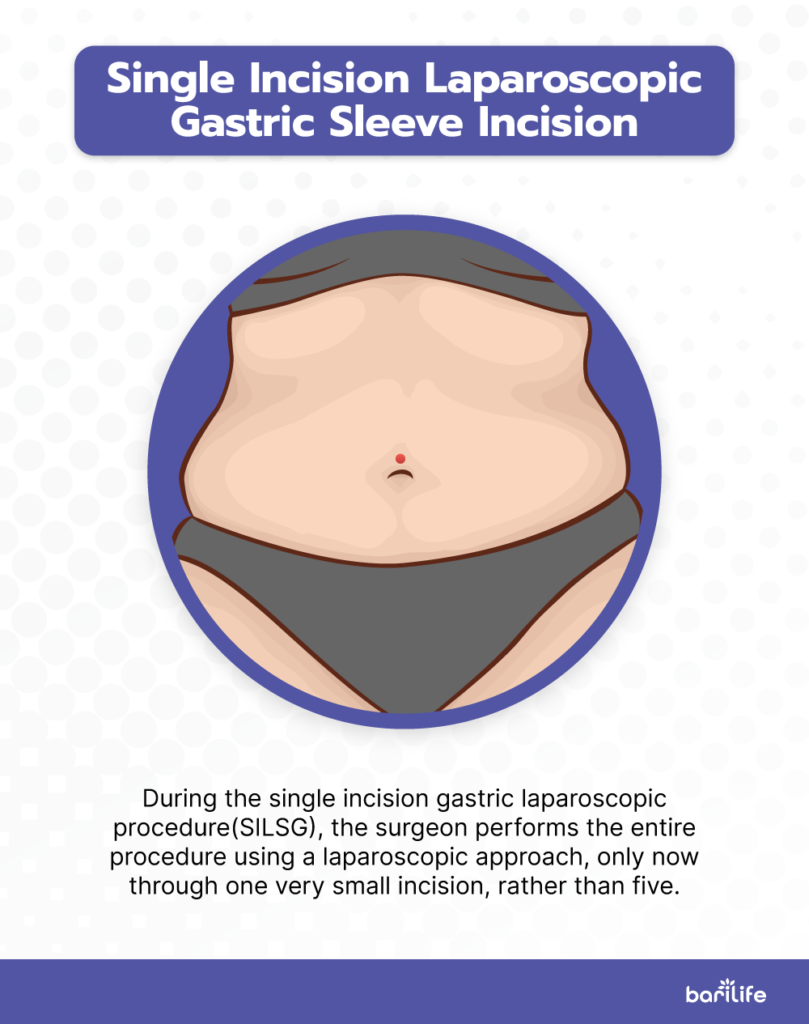
Because the single incision laparoscopic gastric sleeve surgery is still somewhat new, many surgeons have not yet adopted this surgical approach and prefer the traditional laparoscopic method.
Gastric Sleeve Incision Healing and Care
As with all surgeries, the incision site requires extra care. The primary focus post-surgery is avoiding gastric sleeve incision site infections. Depending on the incision type, there may be different approaches to reducing infection risk. Some of the generally followed principles include:
Other factors that can help reduce gastric sleeve infection risk by the surgery team include:
- Well cleaned and prepped incision site prior to surgery
- Keeping the operating time as short as possible
- Choosing the laparoscopic approach when possible
Maintaining a clean environment once discharged from the hospital and following gastric sleeve incision care instructions can also ensure that your incision has the best chance of healing without complications.
What About Scars?
Despite very small incisions required for laparoscopic surgery, many would still like to reduce scarring as much as possible. It is important to follow your surgeon’s aftercare instructions closely in order to reduce the appearance of scars. General rules of thumb include:
- Keeping the area clean
- Keeping the incision dry
- Avoid touching or picking at the incision site
- Once cleared by the doctor, use a moisturizer or scar minimizing product
- Avoid sun exposure as this will worsen the appearance of scars
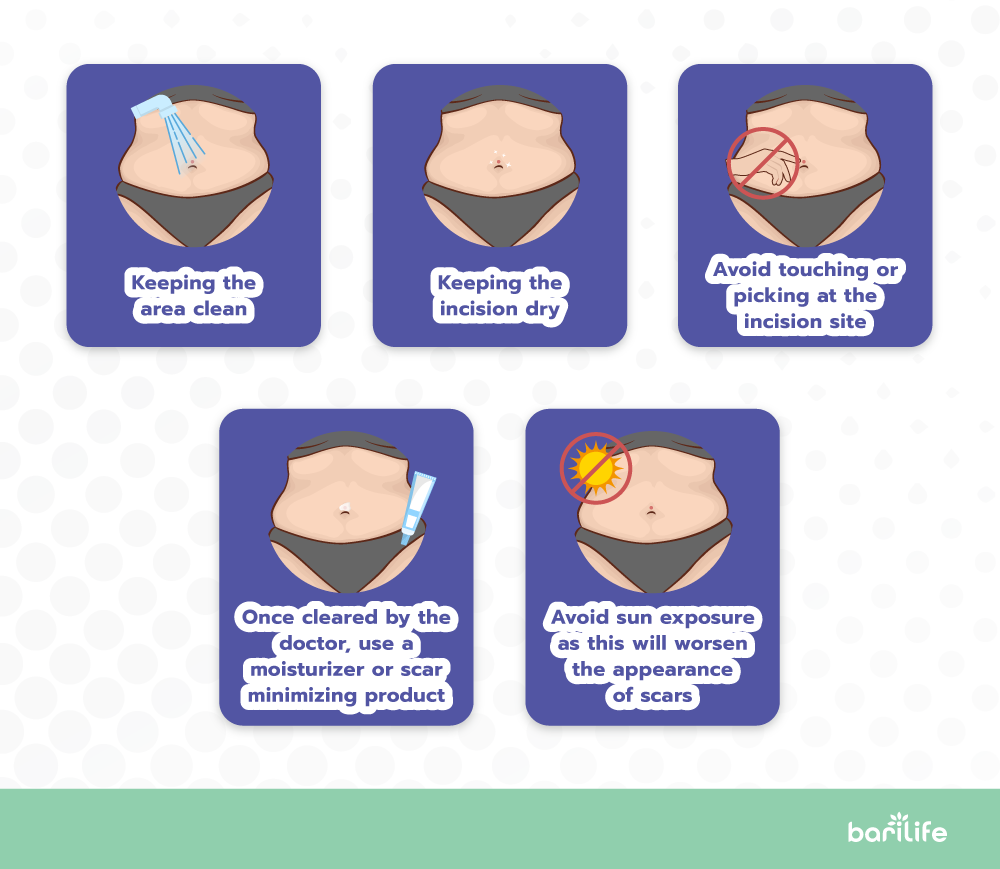
Which Gastric Sleeve Incision Option is Best?
Wouldn’t it be great to have a quick and easy answer as to which incision option is best for you? The fact is, everyone is different so a one size fits all approach isn’t in your best interest. A few things to consider:
- Speak with your surgeon. Find out about their method and why they prefer one surgical option over others. If you are comfortable with your surgeon, then you are likely going to be confident in their approach and reasoning.
- Know your body. If you have concerns about your body’s healing processes or gastric sleeve incision preferences, bring that up with your doctor.
One of the most important things to remember is that you are your own advocate. You should be able to go into surgery feeling confident about the procedure. Avoid feelings of embarrassment around asking questions.
Putting the Pieces Together
Gastric sleeve incisions vary based on the surgeon and practice. Although open incisions are not as commonly performed, there is still a need for them from time to time. Single-incision laparoscopic gastric sleeve incisions are growing in use and popularity, but are still not considered the gold standard method. If you are preparing for gastric sleeve surgery, it is most likely that your surgeon will perform the traditional laparoscopic gastric sleeve procedure on you in which five to six very small incisions are made at the start of the procedure.
Regardless of the gastric sleeve incision performed, take precautions to avoid infections, follow your surgeon’s home-care instructions, and do what you can to minimize scarring.
You can speak to your surgeon about their incision practices and the reasoning behind them, and be sure to ask all the necessary questions in order to ensure your comfort with the procedure. Armed with knowledge, you can rest assured that your procedure will be a success!




What are your tips and tricks to post-bariatric success?